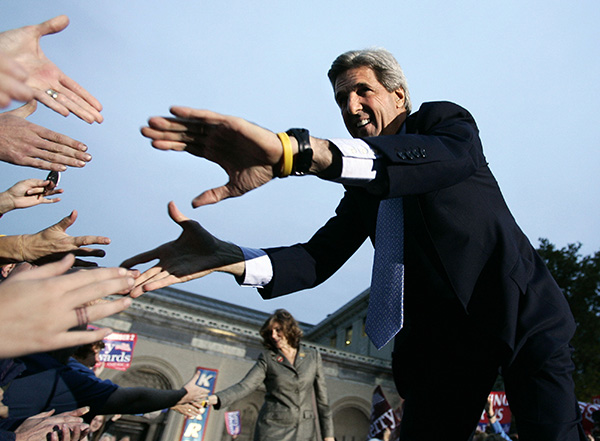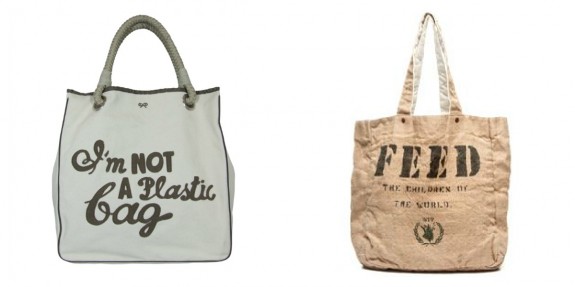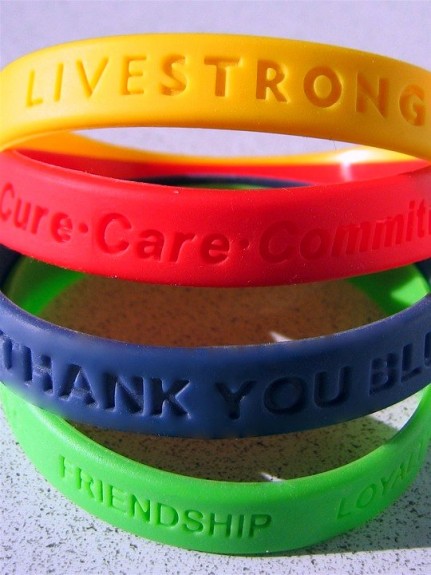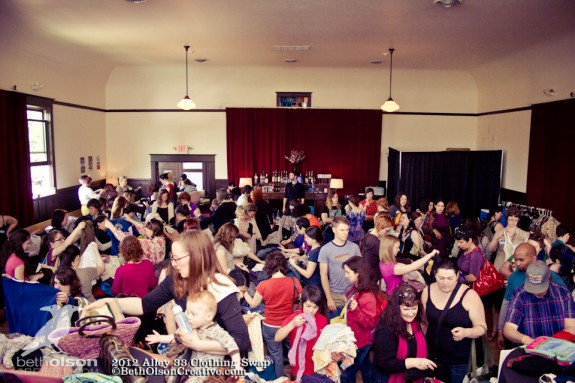The Aughts: When People Wore Their Causes on Their Sleeves, Literally
It was a decade of Uggs and excess but also styles meant to further the greater good
![]()

John Kerry at a campaign rally, showing off his wristbands. AP Photo/Gerald Herbert
At every stump speech, meet and greet, and town hall gathering during the 2004 presidential campaign, John Kerry wore a very distinctive bracelet: the bright yellow LiveStrong wristband. He wasn’t the only recognizable figure to embrace the cancer cause through a silicone band. Usher, Lindsay Lohan and Ben Affleck were also some of the 80 million-plus people who made it known they supported a good cause, and felt cool doing it too.
What followed was a charity wristband explosion, a distinctive way to wear your heart on your sleeve, or your cause on your wrist. Silicone gel “awareness bands” were made in all shades of the rainbow to build awareness and foster support for all types of causes: pink for breast cancer, purple for pancreatic cancer, blue for autism, red for AIDS, orange for anti-smoking. For a mere buck, you could slip a piece of rubber on your wrist and be braceleted, give yourself a pat on the back for your contribution to making the world a better place.
Look around. How many people do you see wearing those bands now? Almost none. They’d already lost their luster before the Armstrong doping debacle, disappearing almost as quickly as they emerged (although LiveStrong still sells them). In about 15 years, they’ll make an ironic comeback.
The aughts haven’t yet receded into the distant past, but already we’re thinking about what we’ll look back on and associate with the first decade of the 21st century. Not long ago, the New York Times published, “What Will We Miss When It’s 2033,” a rather broad assessment of the music, culture and style we’ll associate with 1999 to 2009, name-checking everything from Gwyneth Paltrow to the Black Eyed Peas to “Project Runway” to angular haircuts, flared jeans and trucker hats.
Last week, the fashion site Refinery29 ran a piece, “From Uggs to Y2K, What the ’00s Meant to Us,” that examined what cultural events influenced fashion during that decade. (Full disclosure: I was quoted in that article.) The post considered the sobering impact of 9/11 and the technological advances associated with the iPod and social networks. And although we may want to look the other way, it also mentioned a few cringe-worthy trends of the decade (Uggs boots everywhere with everything, low-slung jeans and midriff-bearing tops, tramp stamps, velour sweatsuits and gazillion-dollar “It bags,” just for starters).

I’m Not a Plastic Bag
Let’s look on the bright side and give the aughts some points for meshing style with intentionality. The popularity of cause-specific wristbands are on example. But there are others.
Simultaneous with – and in response to – fast fashion came a push for more sustainable clothing, reimagined for the aughts. Hemp-y, shapeless, neutral-toned bag dresses were updated with more form-fitting, stylish eco-fashion lines like Loomstate, Edun, Barneys Green Label and Stella McCartney. They found an audience who was willing to listen to why producing clothes in more earth-friendly ways (than, say, using 700-plus gallons of water to make one cotton T-shirt) was vital.
Remember Anya Hindmarch’s “I’m Not a Plastic Bag” tote bag that sold out in a matter of minutes in 2007? Or Lauren Bush’s FEED bag that followed on its heels? Both were green status symbols, especially as plastic bags were spurned and sustainable fashion, and its accompanying accessories, gained cachet.
The credit default swap led to the proliferation of clothing swaps. A desire to work with our hands, along with other responses to fast fashion, resulted in an uptick of DIY, crafting, recycling, upcycling, thrifting, as well as an appreciation for all things handmade, thanks to Etsy, which launched in 2005.
And however you may feel about TOMs shoes, its “one for one” model for giving shoes to needy children, begun in 2006 and now promoted in shoe stores around the globe, mainstreamed the discussion about a consumer’s responsibility to make socially aware clothing choices.
The Refinery29 post concludes by referencing a BBC article about the science of resurfacing trends, addressing the cycle of style. Only time will tell if we’ll look back on these cause-related fashion trends with amusement, befuddlement or gratitude, particularly if – and maybe it’s overly optimistic – in hindsight, we find that one small step for fashion leads to one more substantive step toward building a better world.
/https://tf-cmsv2-smithsonianmag-media.s3.amazonaws.com/accounts/headshot/emily-spivack-240.jpg)


/https://tf-cmsv2-smithsonianmag-media.s3.amazonaws.com/accounts/headshot/emily-spivack-240.jpg)